This is the 10th part in a series of 12 monthly essays leading up to Columbia’s 50th birthday celebration in June 2017. © Len Lazarick 2017
It ran first in The Business Monthly, circulating in Howard and Anne Arundel counties, and after that, was published here on MarylandReporter.com and by our partner website, Baltimore Post-Examiner.
The copyright is maintained by the author and may not be republished in any form without his express written consent. Comments and corrections are welcome at the bottom.© Len Lazarick 2017
Links to all the essays are at the bottom of this story. They have been compiled into a 200-page book available here.
By Len Lazarick
We officially celebrate Columbia’s birthday on the summer solstice, June 21, marking the day in 1967 the Wilde Lake dam was dedicated in a small ceremony.
The more formal unveiling of the new town actually occurred at a gala celebration three weeks later. On July 14, as Josh Olsen described it in his biography of Columbia founder Jim Rouse, a parade of cars brought the invited VIPs to the Town Center plaza. The crowd, in tuxedos and gowns, then made its way to the first performance of the National Symphony Orchestra (NSO) in its new summer home at Merriweather Post Pavilion, one of the first buildings Rouse had commissioned.
Vice President Hubert Humphrey was on hand to do the honors, as was Marjorie Merriweather Post, the wealthy socialite and arts patron for whom the venue is named. There were congressmen and ambassadors in the audience. (Post’s family built the Mar-a-Lago estate in Palm Beach, now owned by Donald Trump.)
Before the orchestra could hit its first note, a thunderous downpour began, leaving the audience traipsing back through muddy paths to the tentless plaza. Even so, the nationally known music critic of the New York Times, Harold Schonberg, proclaimed the pavilion “an architectural and acoustical success. … The shed is exceptionally handsome, with pleasing proportions, clean lines and an unobtrusive kind of finish that fits perfectly into the landscape.”
It was a review that brought the first national acclaim to architect Frank Gehry, he would recall years later, long after his work became world-renowned. And the review was but part of the effusive national media attention lavished on Columbia in its early years.
The event and the pavilion placed the performing arts at the heart of Columbia. For the next 50 years, Merriweather would bring hundreds of thousands of people to Columbia for music of every genre, though classical quickly took a backseat to a parade of pop artists from rock, country and folk. For many people in the region, it is their only experience of Columbia, except for the mall and the big box stores on the town’s periphery.
Merriweather brought crowds, traffic, parking hassles and, depending on the group, drugs and booming noise into the night. For some of Columbia’s youth, it was a first job, and for many years now, the site of high school graduations.
Now in its 50th year, the Pavilion of Music, as the planners dubbed it, has given its name to Merriweather District in the long-delayed completion of Columbia’s downtown, an arts venue at its urban core and in its central park — Symphony Woods.
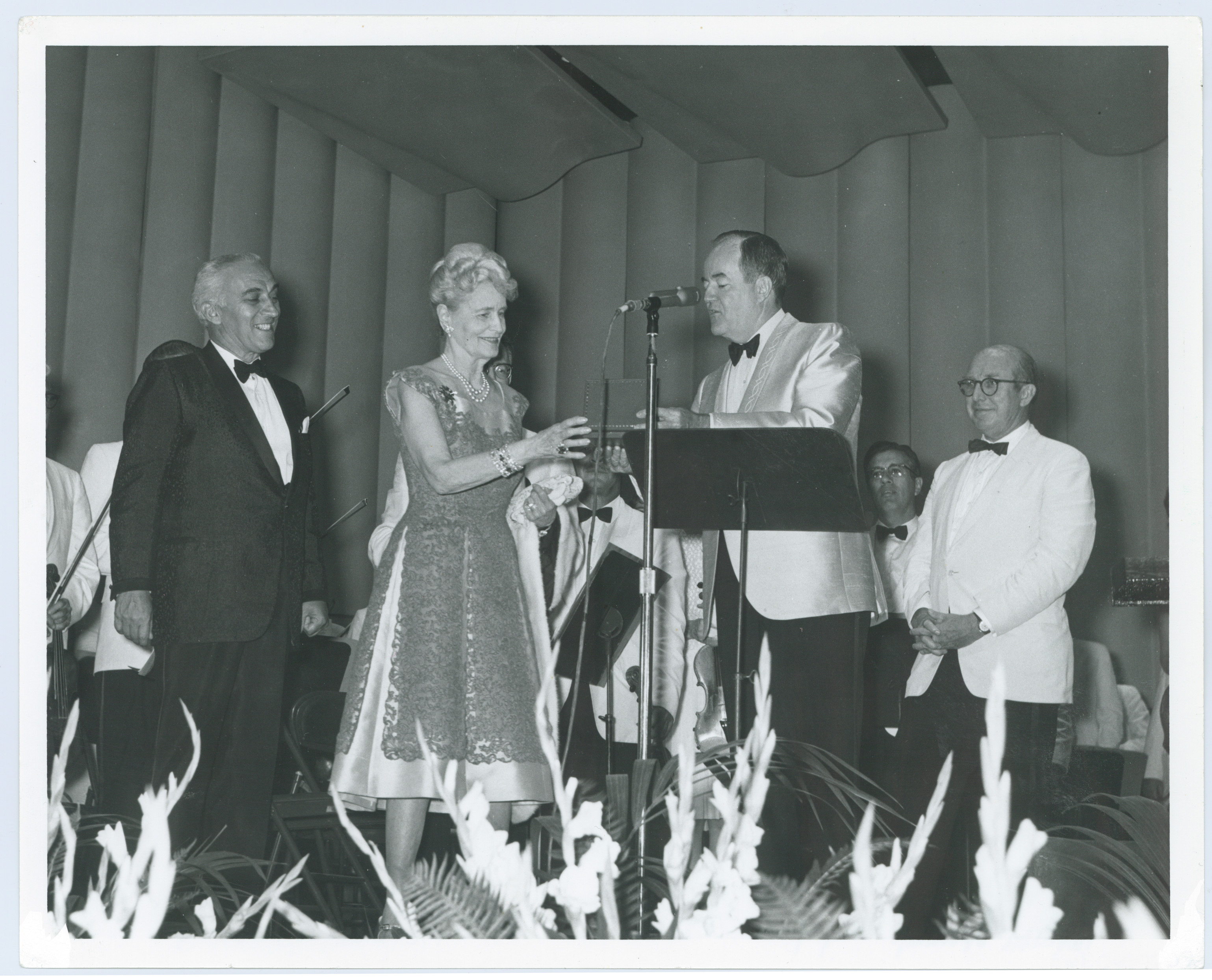
At the opening of the pavilion, Marjorie Merriweather Post presents a silver-plated ticket to Vice President Hubert Humphrey, as Jim Rouse, left, and Howard Mitchell, conductor of the National Symphony Orchestra, look on. Photo by Max Araujo. Courtesy of Columbia Archives.
Rouse and the Arts
As Gehry told Olsen in an interview, Jim Rouse was not very sophisticated when it came to the arts and architecture. “I didn’t think his taste was very good. It was penny loafer-loafer and tweed-coat. He was a God-fearing man who didn’t have much of an art education.”
But Rouse, a leader of the Baltimore business community, knew that arts and culture were an essential element of city life, and in Columbia he was building “a real city — not just a better suburb.”
As we’ve seen repeatedly in previous essays, Rouse and his chief planners paid close attention to almost every detail of community life — stores and churches, bike paths and pools, schools and libraries, hospitals and colleges. The arts were no different, as witnessed by the range of topics in the Rouse correspondence files at the Columbia Archives.
There are letters and memos of meetings, not just about the National Symphony — and the Baltimore Symphony as well, which spent a few summers at Merriweather after the NSO retreated to Wolf Trap in Virginia.
There were explorations of funding with foundations and the National Endowment for the Arts. The Hirshhorn family was pursued for its modern art collection before they finally donated it to the Smithsonian. Washington’s Corcoran School for the Arts explored setting up a campus in Columbia. A major push for funding to create the New City Ballet, a professional touring group, never succeeded, exemplifying a nagging problem for the arts in general, even for established organizations.
Internal memos went back and forth debating the visual arts center in Long Reach. What is more important, they argued, providing a space for professional artists or allowing residents to create art themselves?
It was an argument that played out over many venues — attending performances versus giving performances, viewing the arts versus creating your own art.
Jim Rouse and Wallace Hamilton, his director of institutional planning, were ready and willing to meet with most anyone who could possibly enhance the cultural presence in the planned community.
Land in Town Center near Merriweather was set aside for a professional theater. Olney Theatre and the Oregon Ridge Dinner Theatre were in competition; the more low-brow Garland Dinner Theatre won out.
Jim Rouse maintained a persistent personal interest in the presence of performing arts in the community. But the experience of owning a performance venue like Merriweather was at turns exhilarating for the level of performers it brought to the new town and frustrating for the headaches it produced. It was never a success as a concert hall for classical music, but when the rock bands arrived, it drew huge crowds of the counterculture — long hair, tie-dyed shirts and all.
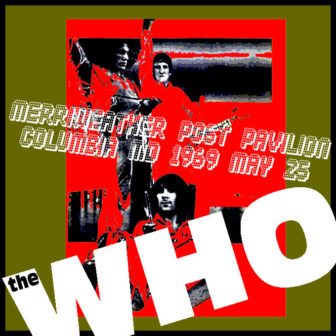
The Who poster. From Chuck Bubeck’s blog “Merriweather Back in the Day”
One of the most notorious concerts was the July 1970 appearance by The Who. As one clipping from a local paper recounted it: “The group’s one night stand was swamped by an estimated 20,000 youths. After more than 11,000 tickets were sold, several thousand youths were admitted free when it appeared they might storm the Pavilion’s fences. Only the night before, a much smaller crowd for another rock concert produced a fight resulting in numerous minor injuries and five arrests. Police called for an end to rock concerts in Columbia.”
County Executive Omar Jones threatened to shut the place down, and Merriweather switched to tamer music groups, like The Doobie Brothers.
In the early 1970s, Jim Rouse scrawled a note in his signature green felt tip pen to a young Mike Spear, who eventually would become CEO of the Rouse Co. (and would die in 1990 in Boston with his wife and daughter in the crash of a plane he was piloting). Rouse was complaining about the variety of offerings at the Painters Mill Music Fair in Owings Mills — Milton Berle, the Temptations, Angela Lansbury.
“Mike, if Painter’s Mill can do this, what the hell is wrong with us? (Nederlander?),” Rouse asked, referring to the New York firm that handled bookings and day-to-day operations at Merriweather.
It reflected the many challenges over the years for the pavilion as the performers and the audience changed.
Having lived in town since 1973, fighting the concert crowds on a humid summer evening has never appealed to me. But as news editor of the Columbia Flier and Howard County Times in the 1980s, I did pay attention to it as a venue for police activity. There were echoes of Merriweather’s early years in the July 1985 headline “Invasion of the Deadheads,” chronicling the return of the Grateful Dead. Fans slept outdoors, mall sales were up, and there were only two arrests, it reported. “There were no arrests for possession of the drugs that were widely available.”
While the developer continued to fret over arts in the new town, the educated men and women who were attracted by the early promise of a planned community created cultural and arts institutions of their own — mainly the women. Many of them have come and gone, but some survive today.
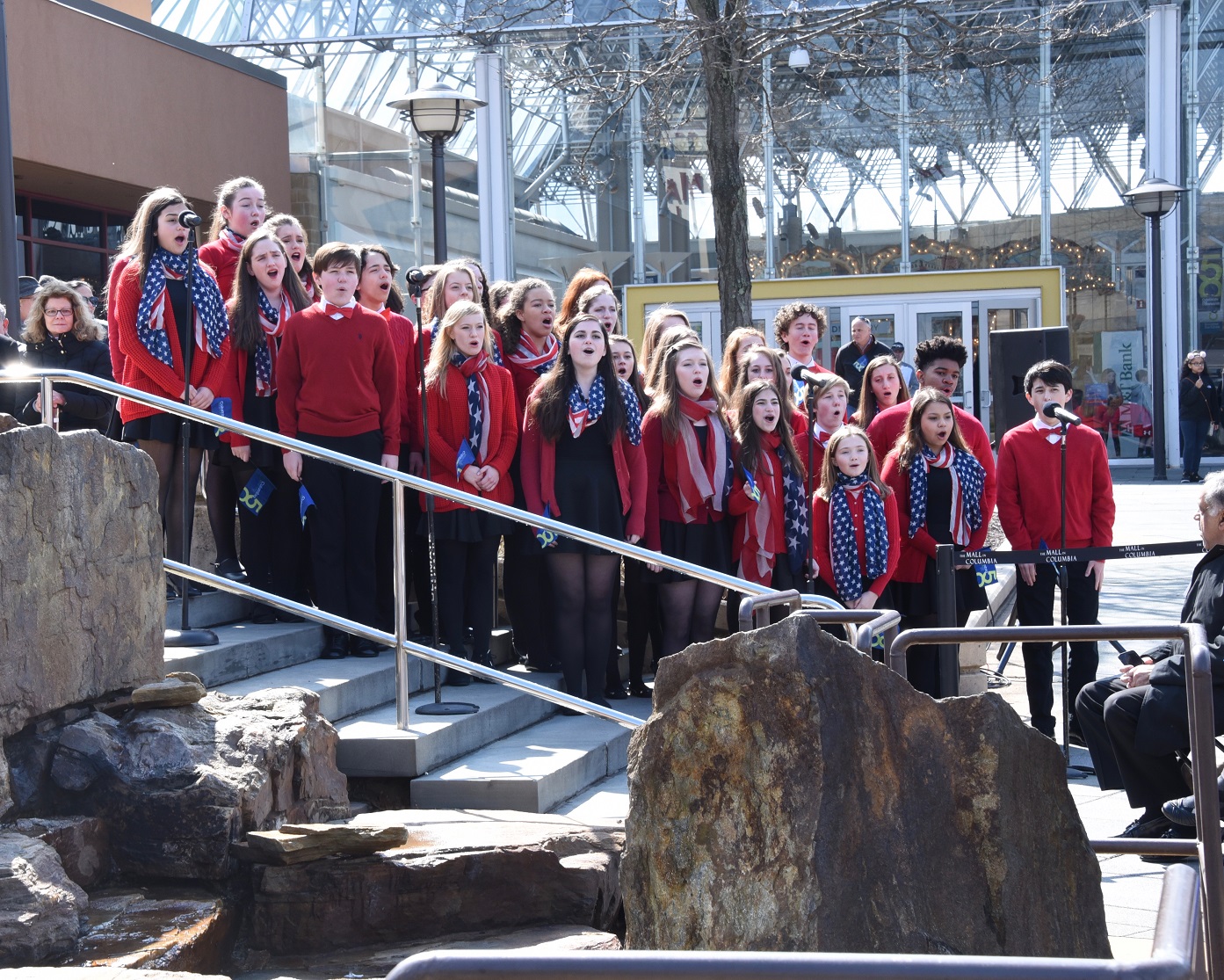
The Young Columbians performed “This is My Country” at the kickoff for Columbia’s birthday celebration March 19. Photo: Len Lazarick
Toby Orenstein
Toby Orenstein had been running a program teaching dramatics to children at the Burn Brae Dinner Theatre down Route 29 in Burtonsville after she moved to the area with her economist husband Hal Orenstein for his job in D.C. in 1959. A native New Yorker with a degree from Columbia University, she previously had taught dramatics in Harlem at P.S. 105 in a project set up by Eleanor Roosevelt.
In the early ’70s, she needed to find another location. “A lot of the students were from Columbia,” she recalled, including children of Rouse Co. executives, among them the vice president for leasing at the malls, Larry Wolf. In a memo to other Rouse Co. executives in the archives, Wolf urged them to attend a performance by Toby’s group. They were hooked.
Orenstein had other options for her relocation, but Jim Rouse persuaded her to move to the new town from Burn Brae where she set up the Columbia School for the Theatrical Arts. When the 1976 U.S. bicentennial rolled around, Toby formed a troupe of the youngsters to perform patriotic songs, and called them The Young Columbians.
They would eventually be part of bicentennial programs in D.C. that were broadcast on TV.
In 1977, they performed at the White House for President Jimmy Carter’s second state dinner, for Prime Minister Pierre Trudeau of Canada, father of the current PM. “In 30 minutes, they cause American History to unfold through classic songs and dances from colonial days to the present,” noted the official menu for the dinner. It was attended by Jim Rouse, an early supporter of Carter, recruited by Carter’s Maryland chairman, Sen. James Clark, Jr.
(The next year, July 21, 1978, in a whirl of dust, Carter’s Marine 1 helicopter would land on Clark’s Route 108 farm so that the president could attend a Willie Nelson concert at Merriweather.)
By coincidence, at a Young Columbians engagement in Williamsburg, Va., Toby learned that the Garland Dinner Theatre was for sale. She bought it in 1979, and it became Toby’s Dinner Theatre, putting on hundreds of musicals over the past 38 years.
“I’ve been very lucky, and I’ve been at the right place at the right time,” Toby said in a recent interview in her cramped little office that she shares with three other people.
Toby is now on at least her eighth iteration of The Young Columbians ensemble. They performed “This Is My Country” at the March 19 kickoff of Columbia’s 50th birthday celebration outside the mall.
Toby’s most famous former pupil is actor Edward Norton, the grandson of Jim Rouse. In a Howard Community College Cable Eight interview in 1996, he told Carolyn Kelemen he started with Toby when he was 5 or 6 years old — that would be in the mid-1970s. By the time he was 12 or 13, he had already appeared in a couple of plays at Toby’s, including “Pippin.”
He recalled Toby telling him, “You’re going to make a great director some day.”
Toby is planning for a reunion of The Young Columbians on June 24, and she expects 50 or 60 alumni to attend.
Still going strong at 80, with her husband Hal at her side, her dinner theater will play a major role in the development of downtown Columbia.
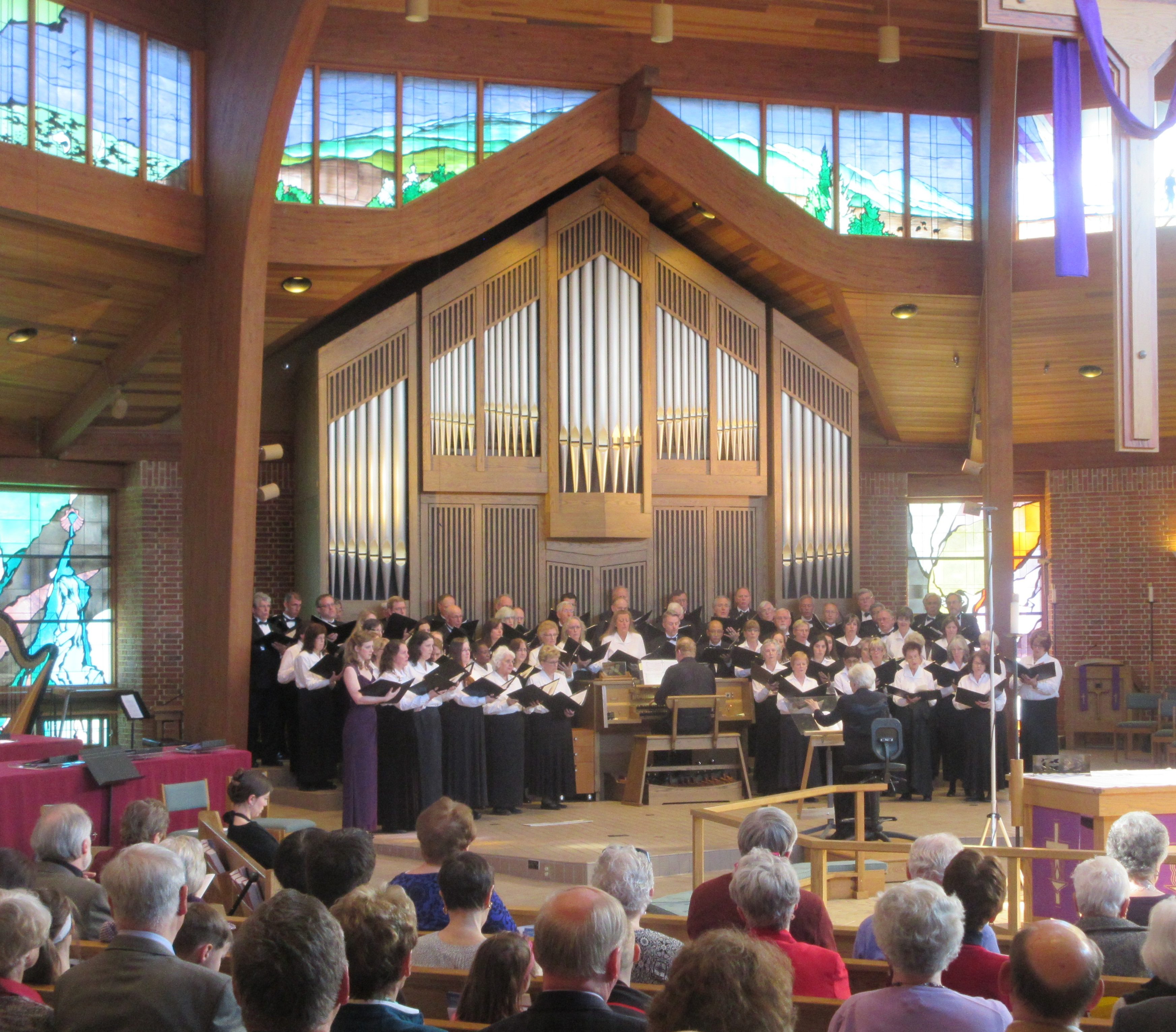
Columbia Pro-Cantare sings at the First Evangelical Lutheran Church of Ellicott City March 19. Photo: Len Lazarick
Columbia Pro-Cantare
On Sunday afternoon, March 19, Frances Motyca Dawson slowly made her way to the podium at the First Evangelical Lutheran Church of Ellicott City for what has been one of her passions over the 40 years of concerts given by the Columbia Pro-Cantare chorus, which she founded in 1977 — bringing the rich choral music of Eastern Europe to American audiences. For this performance she was conducting church music by Antonín Dvorák and Zoltán Kodály, accompanied by the church’s pipe organ.
Like many a classical music audience, the majority of the several hundred attendees had gray hair or no hair at all, as did the bulk of the 78-member chorus. Dawson proudly recalled one of Pro-Cantare’s best-attended concerts over the decades: the 2,000-plus people who packed Holy Rosary church in 1982 in East Baltimore. That concert of Polish music, performed at a Polish-language parish, came during the imposition of martial law in Poland after the labor unrest led by the Solidarity movement.
Like other groups that would form over the years, Dawson founded Pro-Cantare to provide opportunities both for Columbians to perform at a professional level for the auditioned but all-volunteer chorus and for residents of Columbia to experience that music. As she describes on the group’s website, she was “inspired by Jim Rouse’s vision of Columbia as a place where people could grow and find expression for their artistic talents.”
Dawson is also proud of the 1987 Hail Columbia concert celebrating Columbia’s 20th birthday that “featured Jim Rouse’s premiere as a performer, when he narrated Aaron Copland’s ‘A Lincoln Portrait.’”
Kathie Bowen, who served as Pro-Cantare’s executive director for 25 years and continues to sing as a soprano, recalled that this concert at Merriweather was sponsored by the Ryland Group, also celebrating its 20th year, as a benefit for local nonprofits. “Jim Rouse agreed [to do the performance] if Frances would coach him, which she did, and everything went off beautifully,” Bowen said.
On May 14, Columbia Pro-Cantare will reprise that concert with the Copland piece as well as the choral piece, Tom Benjamin’s “I Build a House,” in honor of Jim and Patty Rouse that opened the Jim Rouse Theatre for the Performing Arts at Wilde Lake High School in 1997.
HoCoPoLitSo
“In the early decades there was a lot of cross-fertilization between the [arts] groups,” Bowen recalled, such as the Candlelight Concert Society, founded by Norm and Nancy Winkler, which continues to bring in soloists and small groups of professional performers. “When I joined Columbia Pro-Cantare in 1981 and for several years afterwards, Ellen Kennedy was a member of the alto section,” Bowen said. Kennedy, wife of former Columbia Association President Pat Kennedy, had been a founder of the Howard County Poetry and Literature Society, HoCoPoLitSo for short, that she initially ran out of her home next door to Jim and Patty Rouse.
Kennedy; Jean Moon, editor and general manager of the Columbia Flier; and actor Prudence Barry in 1974 founded the group, that is mostly as highbrow as its name suggests.
In April 1978, having written about Ellen Kennedy and her book on the Negritude Poets — translations of the African poets who wrote in French — I was called on to introduce German poet Vincent Kling, due to my smattering of high school and college Deutsch. I joked to the audience, based on my even smaller smattering of seminary Greek, that HoCoPoLitSo sounded to me like a Greek verb meaning “to read poetry on a Saturday night.”
Poetry readings are the group’s stock-in-trade, and Lord knows there are few venues outside colleges and universities where poets can offer their works. Lucille Clifton was one of their favorites, a three-fer if you will — an African-American woman poet who lived in Columbia and was Maryland’s poet laureate, among many other honors. She made dozens of appearances and eventually served on the HoCoPoLitSo board before her untimely death in 2010 at the age of 73.
Over the years, HoCoPoLitSo branched into fiction and drama, and even the occasional music performance, especially for its annual Irish night in February. Featured writers included big names like Isaac Bashevis Singer, Allen Ginsberg, Saul Bellow, Seamus Heaney, Edward Albee, Taylor Branch, Frank Conroy, Garrison Keillor and many lesser-knowns as well.
Last year, novelist Laura Lippman packed the Slayton House theater for a reading and discussion of her dark novel Wilde Lake, which drew on her years at Wilde Lake High School.
Columbia Festival of the Arts
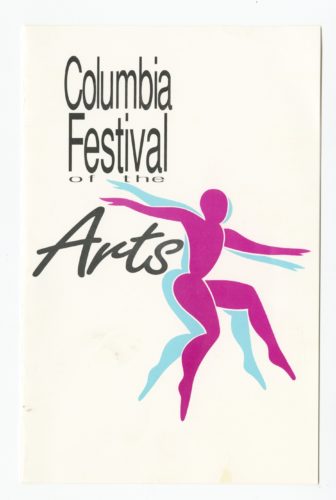
Columbia Festival of the Arts first brochure. Courtesy: Columbia Archives
Researching the arts scene in and around Columbia, the name Jean Moon consistently shows up. She was the editor of the Columbia Flier in its early years, and for decades the general manager of Patuxent Publishing, and then head of her own public relations firm. She is neither an artist nor a performer, but something even more valuable in the often cash-strapped world of the arts — a patron, an engaged spectator, an appreciator, a connoisseur and a promoter.
In the decades it was running as fat as 120 pages or more, the Columbia Flier was flush with arts coverage — not just film and theater, but music, dance, the visual arts — anything from Wolf Trap in Virginia to the Mason-Dixon line. That coverage reflected Jean Moon’s passion and interest.
This passion led to the founding of the Columbia Festival of the Arts as an outgrowth of the Hail Columbia experience. The brochure for its premiere program of events in 1989 said the festival “strives to bring affordable, family-oriented culture and art to Howard County.” But it was also a business initiative, designed to contribute to economic development.
Over the years it consistently has brought in quality performances, such as the return of the Baltimore Symphony Orchestra to Merriweather, including some performances with Pro-Cantare. For years, big-name acts and many national and international groups performed in a 10-day extravaganza.
When Moon chaired the festival board in the 1990s, she wrote: “I think the most extraordinary thing about the arts is the emotional connection we feel with one another when we share in wonderful performances.”
This was all in the context of a community that fully embraced the arts. “There was a lot of support for what other people were doing in the arts,” said John Harding, arts editor of the Flier and Patuxent Publishing for 26 years until 2011. “They were a very arts-supportive community,” Harding said. But “something happened to the community.”
In March 2009, Nichole Hickey, director of the festival, told the Flier, “We began to see the downturn in the economy last year, in terms of financial support, in particular from the corporate side.”
By that time, three of the top corporate contributors to the Columbia Festival were gone from the scene — the Rouse Co. had been sold to General Growth Properties for $12.6 billion in a move that contributed to GGP’s eventual bankruptcy, the Ryland Group had moved to California, and a much thinner Patuxent Publishing was owned by the Tribune Co., also in bankruptcy. The daily Baltimore Examiner I joined in 2006 shuttered around then, and many firms struggled to survive the Great Recession.
Coverage of the arts in the Flier was severely reduced, as newspapers were on the wane, losing the common marketplace for performances. Arts consumers also had changed their behavior, impacted by a downturn in the economy and with so many more options available over cable and the Internet.
Even in prosperous times, the arts are a fragile enterprise and struggle to survive. The Howard County Arts Council and its funding has a been a lifeline for many of the community groups, and the Community Foundation of Howard County (formerly the Columbia Foundation) has provided grants as well.
Before the Rouse Co. was sold, it had sought to revamp Merriweather as an outdoor venue into a much smaller theater. That led to the formation of the group Save Merriweather, including a proposal for the county to buy it.
As Jean Moon pointed out in a recent interview, “We don’t have enough density [in Columbia] to be a venue for major cultural entertainment,” especially with Baltimore and Washington so close. Serious patrons will travel far to sate their appetite, as the traffic jams at Merriweather attest.
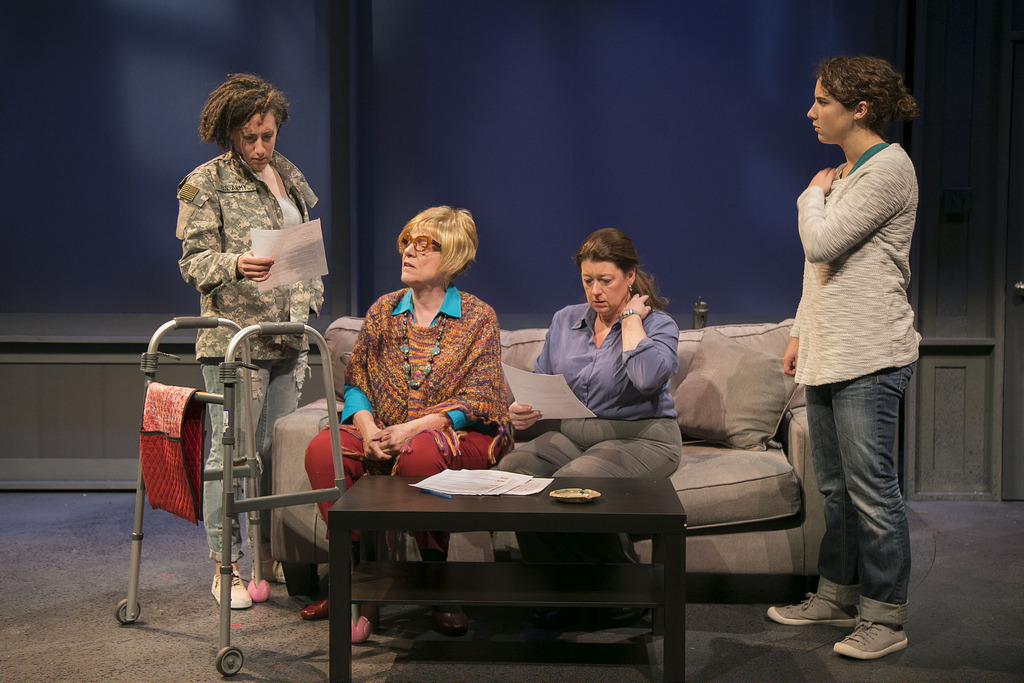
In the 2015 world premier of “Technicolor Life” at Rep Stage, Valerie Lash, second from left, its founding artistic director, played a grandmother who wants her family to throw a good-bye party before she takes her own life. Photo: Rep Stage
An Anchor at the College
As Columbia has matured, a major anchor for all the arts in the not-so-new town has been Howard Community College.
The Peter and Elizabeth Horowitz Visual and Performing Arts Center opened in 2006, becoming a cultural hub for Columbia and Howard County. It combines performance and instruction in a sleek building built with a combination of private philanthropy and government funds.
Valerie Lash presides over it from an impressive corner office with windows and a balcony overlooking the quad that did not exist when she arrived at HCC in 1982, the longest relationship she’s ever had in her life, laughed the actress and drama instructor who has always operated with flair.
“Before this building, there was no facility designed and built for instruction in the arts,” said Lash, now the dean of arts and humanities at the college. The school had a commitment from the state for half the $22 million cost of the building and was hoping to get the county to cough up the other half. But then-County Executive Jim Robey “said he could only afford half of that.”
HCC began an aggressive campaign for local donors that included “salons with entertainment” Lash would organize. The Horowitzes, whose EVI Technology firm provided products and services to the National Security Agency and others, were the first million-dollar donors to the college. The unassuming couple were collectors of Russian art, and some of it is on permanent display at the college, along with a wonderful portrait of the two by faculty member James Adkins, better known in local circles for his finely detailed nudes.
HCC wound up “with benefactors for every room in the building,” Lash said. Names well-known to most of the business community are attached to even small spaces such as the mostly soundproof practice rooms for musicians and studio space for painters.
A paid staff handles programming and sales for the college’s two theaters, including the Smith Theater, originally a large lecture hall; and an intimate, wood-paneled recital hall, which hosted 48 concerts in the past year. “It’s a business as well,” Lash said. More than 50,000 patrons a year visit the facility for performances and exhibits by faculty, students and outside artists, including a Rouse Co. Foundation gallery with a rotating display of paintings, sculpture and crafts.
“I require all our faculty to be working artists, but they have to be good teachers too,” Lash said.
About the only unnamed space in Horowitz is the black box theater, home to a majority of the plays by Rep Stage, founded in 1993 by Lash. “It is still the only community college in the country with a professional union theater,” she said. With student productions being promoted as well, many people in Columbia and Howard County are not aware that professional-level stagecraft is offered there four or five times a year. The acting is often stellar, but the audiences for the Saturday matinees we attend are old and sparse.
There are few such venues in Columbia or Howard County, which is why the Jim Rouse Theatre for the Performing Arts was attached to Wilde Lake High School as it was being rebuilt, opening in 1997 with a performance by Pro-Cantare and a dance company, and including an appearance by Rouse’s grandson Edward Norton. With 739 seats, it is still the largest professional venue in the county, though it has serious limitations.
A committee that included Lash, Moon and Orenstein also looked into the use of the former Rouse Co. headquarters as a museum and arts center. The arts community was disappointed when it became a Whole Foods supermarket in 2014.
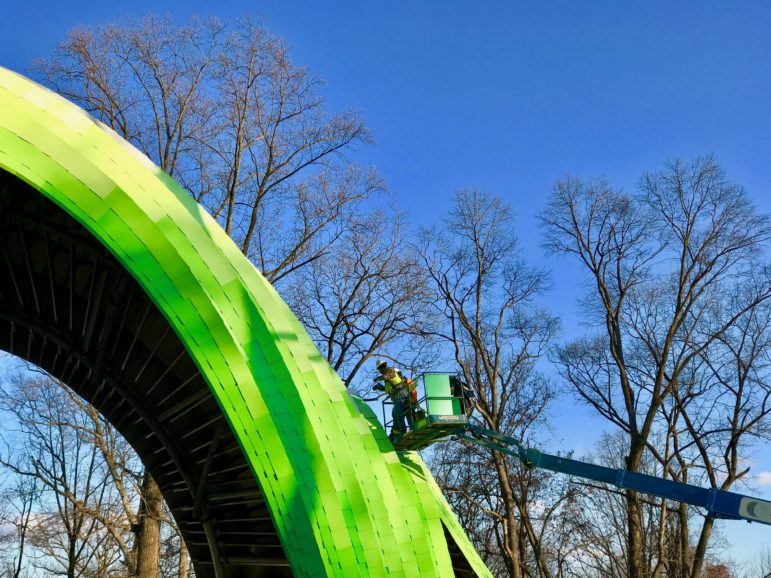
The Chrysalis under construction.
For Toby at least, something even better has emerged in the form of the proposal for the Columbia Cultural Arts Center. It will replace the current dinner theater, which is clearly showing signs of age, but also there will be a children’s theater, a parking garage, a visual arts center and more than 200 apartments, half of them affordable housing for artists. Orchard Development Corp., under chairman Earl Armiger, and the Howard County Housing Commission, under the late Tom Carbo, spearheaded the projects.
“I’ve been looking for my own space for a long time,” Toby said. “Howard Hughes [Corp.] has been very wonderful,” she said. “I would like this to happen while I’m still alive and kicking.”
The project will be next door to a revived and renovated Merriweather Post Pavilion, which just changed hands from the Howard Hughes Corp. to the Downtown Columbia Arts and Culture Commission, a nonprofit headed by Ian Kennedy, one of the leaders of the Save Merriweather citizens movement started 14 years ago. A smaller outdoor amphitheater called the Chrysalis opens April 22.
The arts and entertainment venue that launched Columbia again will be at the heart of the planned community, surrounded by an urban core of apartments and office buildings that hopefully will not complain too much when the music gets loud.
And maybe, just maybe, there will even be some nightlife in Columbia as it lurches into urbanity, with music, song and dancing to go along with food and drink, a candle that has often sputtered in the suburban darkness of a garden for growing people.
Addendum: And Then There Was …
Delegate Terri Hill, who went on to become an Ivy-League-educated plastic surgeon, asked me if I was going to write about dance teacher Anne Allen, with whom she danced when she was growing up in Columbia.
Former Business Monthly publisher Carole Pickett wondered if I would be discussing the Columbia Film Society. She’s a subscriber.
My copy editor mentioned I had neglected the African art museum, the institution created by Claude and Doris Ligon.
So many people, groups and organizations get left out in the limitations of time, and the need to create a narrative that keeps readers interested.
That has been true in most of these essays, but I feel it especially so in this piece about the arts. So many Columbians throughout these 50 years have started organizations to perform drama or song, so many have produced music and dance, so many have picked up brush and clay to shape the visual world.
Dance: Carolyn Kelemen, long-time dance writer at the Flier, does a much more complete run-down of arts organizations, particularly the many dance groups, in her “Sisterhood of the New City” blog. She chronicles both the home-grown and the visiting stars who graced the stage at Merriweather and Slayton House. Kelemen also is on top of the visual arts.
Slayton House: The Wilde Lake community center was not only the Columbia’s first gathering place and home to its first worship services. It also has been a continuing home to community theater and dance classes, and its gallery displays the work of local artists.
Columbia Orchestra: Like Pro-Cantare, with whom it has partnered, the Columbia Orchestra began 40 years ago with volunteer musicians, and since 1999 has been under the musical direction of Jason Love, who won the American Prize for Orchestral Programming in 2013. Its audience numbered 11,000 last year, and it includes the Columbia Jazz Band and chamber concerts as well. The Jim Rouse Theatre is its most frequent venue.
Film: Begun in 1971 at Bryant Woods Elementary School, the Columbia Film Society has been going almost as long as Columbia itself, which has a mixed history on cinema. The Smith Theatre at HCC’s Horowitz Center is now the home for its series of nine independent and foreign film. It sold out its season this year.
The original Columbia cinema with three screens was briefly the home of independent movies beginning in 1999, but was eventually torn down for condominiums.
We are now left with two huge cineplexes — AMC Columbia next to the mall, and United Artists Snowden Square behind Home Depot. Both have 14 screens, comfortable stadium seating (reserved recliners at Snowden), and a wide array of food — but almost always the same mainstream films, with occasional live sports and opera.
Columbia’s only museum, the African Art Museum of Maryland, began in 1980. It stayed in town as it grew through 2011, building on the collection of the Ligons. It is now located in the Maple Lawn community south of Columbia..
Next month: Sports, Recreation and the Columbia Association
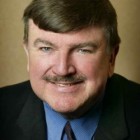
Len Lazarick
Len Lazarick ([email protected]) has lived and worked in Columbia as a journalist for more than 40 years. He is currently the editor and publisher of MarylandReporter.com, a news website about state government and politics, and a political columnist for The Business Monthly.
Part 1: How the ‘garden for growing people’ got planted and grew
In this first installment, Len Lazarick looks at how a new town with ambitions to be a real city “not just a better suburb” came to be on 14,000 acres of Howard County farmland with lofty goals that faced some hard realities.
Part 2: Working in Columbia: Its Downtown and Business Parks Went Up and Down With The Economy
Part 2 focuses on the businesses of Columbia as an essential part of the plan.
Part 3: Shopping and Retailing at the Heart of the Columbia Plan
Part 3 examines the central role of shopping and retailing for the development of the Columbia plan. With changes in both lifestyles and retailing — and a couple of poor locations — the village centers did not always work out as planned.
Part 4: Media in the New Town: Communications part of building community; the Flier and the rest
Part 4 examines the role of media in creating the community, primarily newspapers, and in particular, the Columbia Flier.
Part 5: POLITICS: The Shifting Weight of Columbia Power
This is the fifth part in a series of 12 monthly essays over the next year leading up to Columbia’s 50th birthday celebration next June. This month looks at the shifting dynamics of political power in Howard County because of the presence of Columbia and its largely Democratic voters.
Part 6 EDUCATION: Schools Were Crucial Then and Now
Part 6 examines the planning and transformation of a small, rural, recently desegregated school system with middling rankings to one of the best school systems in the country. Howard County now has 76 schools with 54,000 children and 4,100 teachers, and they face the challenges of diversity, particularly in its urban core of Columbia.
Health care was another key element the original Columbia planners focused on in their 1964 work sessions. Unlike the schools, land use, water, sewer and political structure, for which the Rouse Co. planners eventually would turn to government institutions that already existed in Howard County, they would need to look beyond its borders for help. The opening of the Columbia Hospital and Clinics in 1973, would be one of the most controversial aspects of Columbia’s early years. Its creation was fraught with community tension, political discord and hostility among competing groups, creating ill-will outside of Columbia that would last for decades.
Part 8: RELIGION: Interfaith centers sought to bring congregations together
These interfaith centers in Wilde Lake and Oakland Mills, the first religious facilities built in the planned new town, were among the unique features most often remarked on with wonder in media coverage of Columbia. While they were consistent with the open, integrated and forward-thinking city Jim Rouse had in mind, they were not part of the original planning process at all.
Part 9 ENVIRONMENT: Respecting the Land While Building a City
“To respect the land” was one of the four basic goals for Columbia often repeated by developer James Rouse more than 50 years ago as he pitched his proposal “to build a complete city” on 14,000 acres of farmland, woods and stream valleys. The goals seem almost a contradiction. If he wanted to “respect the land,” why not just leave the fields and forest as they were? Because they were not going to stay that way for long as suburban development spread from Baltimore and Washington along the new interstate highways.
Part 10: ARTS at the Heart of the New Town
The Merriweather Post Pavilion was one of the first structures built before Columbia even had its first residents. Now it is being redeveloped and is at the center of the Merriweather District that is the core of Columbia’s new downtown. But Merriweather is only part of the arts scene in the planned community.
Part 11: Recreation and the Role of the Columbia Association
Keeping a sports facility open that runs consistently at a big loss may seem like a poor financial decision. Yet it is completely consistent with the original philosophy behind the Columbia Association. As Columbia got started, every one of the amenities and facilities ran at a loss, not to mention the debt it took to build them. As Columbia looks to the future, CA not only wants to keep the pools and athletic facilities open, but to keep Jim Rouse’s vision alive.
Part 12 Conclusion: A 50-year-old town faces its future
Veteran journalist and longtime resident Len Lazarick wraps up by looking back over the past 50 years and looking forward to Columbia’s future. All 12 chapters have now been published as a 200-page book.

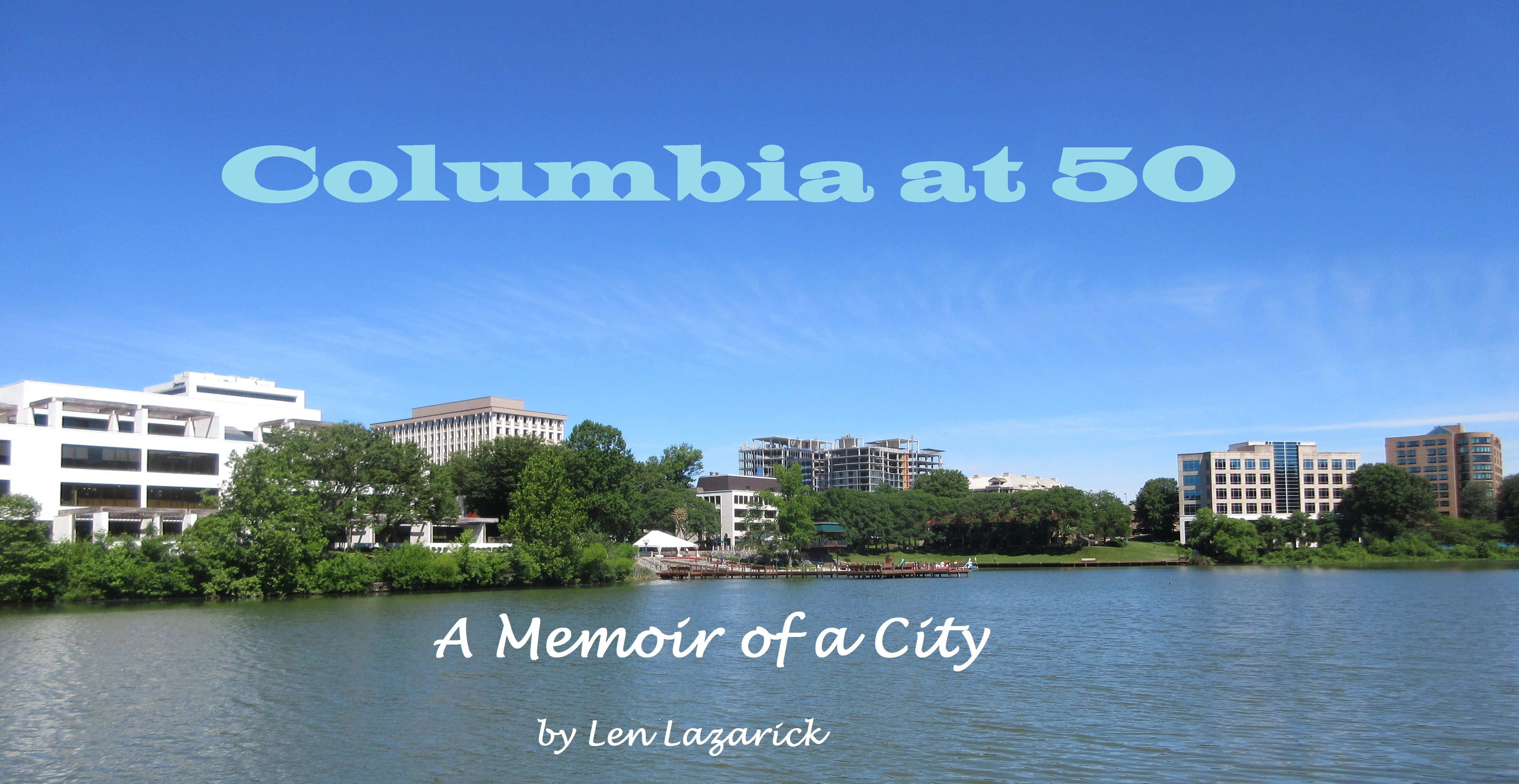



I know this article can’t be totally comprehensive, but I’d have liked to have seen some mention of the community theater troupes that were the heart and soul of the local scene before (and during) Rep Stage’s run. The biggest one was the Columbia Community Players, which evolved into Silhouette Stages. But there was also the Kittamaqundi Theater, New Stages, and Shadow Block Productions. New Stages was founded by local actor/poet Prudence Barry and Shadow Block was helmed by longtime Centennial High drama teacher Mo Dutterer.
Together, these groups developed an audience for local drama outside the realm of the musicals that Toby’s staged. And they did pretty good work too, often staging plays you weren’t going to see anywhere else during that pre-Internet time period, when you couldn’t just dial up anything on YouTube. Some of these titles included “I Never Sang for My Father,” “The Learned Ladies,” “Working,” and “The Way Of the World,” but there were others.
Otherwise, a pretty good overview of the arts scene.
It is so overlooked that I had never even heard of it. Never claimed omniscience.
Oh come on…. why not? Heh. It’s not a big deal, just trying to make more people aware of Columbia Bands and all their groups!
I’m sad to see that you missed out on reporting on the often overlooked Columbia Bands, Inc. which has existed since 1977. I understand that there are a number of organizations to cover, but CBI involves over a hundred musicians who play various types of music for the community at no charge for the audience. It really is a great organization. A brief history of the organization can be found at http://www.columbiabands.org/bands_history.html